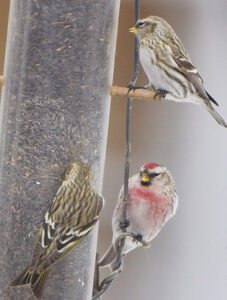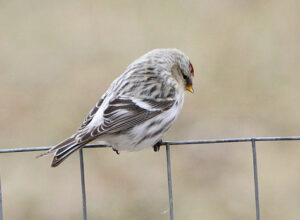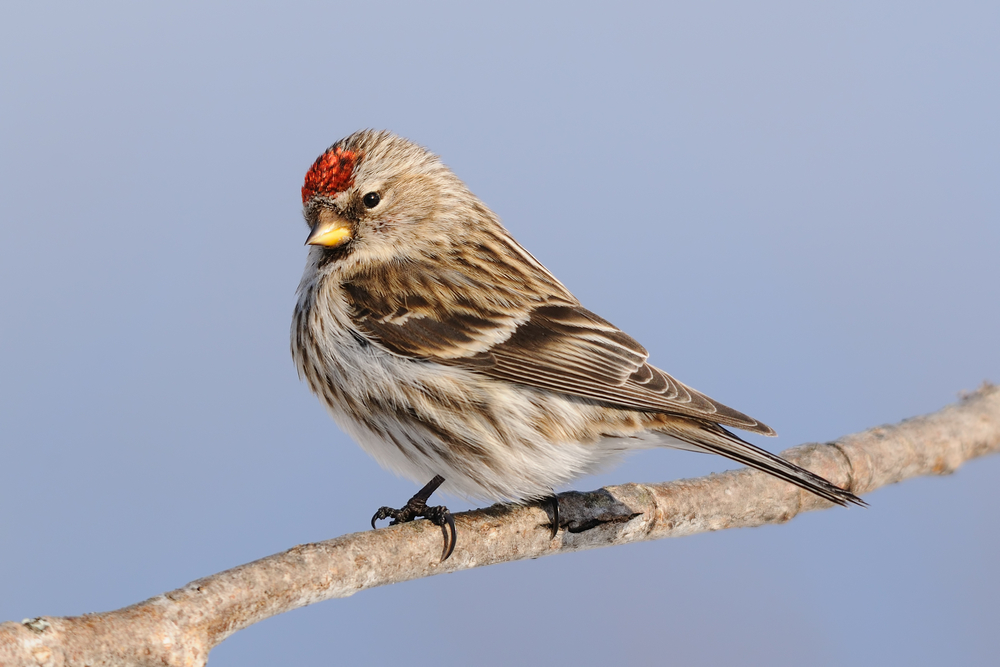Common Redpoll, Acanthis flammea
Bill Rowe
This article is a “heads up” to keep your eye out for Common Redpolls over the next few weeks. They are the rarest of a trio of little finches that come to our feeders and also show up around the countryside wherever there are seeds to be eaten (weedy fields, trees like birches and sycamores, etc.). The best-known of the trio is our resident American Goldfinch, year-round; next, the Pine Siskin, an erratic visitor fall through spring but sometimes numerous; and then the Common Redpoll, which comes down from its arctic and subarctic breeding grounds to spend the winter in lower Canada and the northernmost states. It is an irruptive species, occasionally common as far south as Chicago (they are swarming that area right now) but never common in Missouri. Nonetheless, in a good year they can be found here in small numbers, and indeed they have been showing up in recent weeks, both at feeders and in random unexpected locations. Redpolls occur worldwide in northern regions, with various forms that differ in mostly small ways and may or may not be separate species. In North America, our one additional form, known as the Hoary Redpoll, is generally rare south of the Canadian border, even in areas where Common Redpolls are routine. It may be only a matter of time before the Hoary Redpoll is “lumped” with the Common, but meanwhile it is still described as a separate species in all our bird books, and Missouri has three accepted records of it.
IDENTIFICATION: An easy bird to distinguish if it is at your feeders: it is about the size and shape of a goldfinch or a siskin, with some streaking on the back and sides (goldfinches have no streaking, siskins have it heavily all over), and with a small black chin-patch and a small red cap on the forehead. The latter two marks will identify it immediately as a redpoll; if it’s an adult male, it will also have a bright pink wash on its chest. If you should happen to see one that looks paler, with an unstreaked white rump and undertail, you may have the extremely rare Hoary Redpoll; get photographs!
ST. LOUIS STATUS: To be looked for November-March but primarily January-February, and primarily in years when large numbers are coming south—and even then it is a rather rare species and a nice find.
Learn more and listen to the calls of Common Redpolls here.


Adult male with female/immature
Photo Credit: Al Smith
Hoary Redpoll: frostier, white rump, tiny bill
Photo Credit: Al Smith




